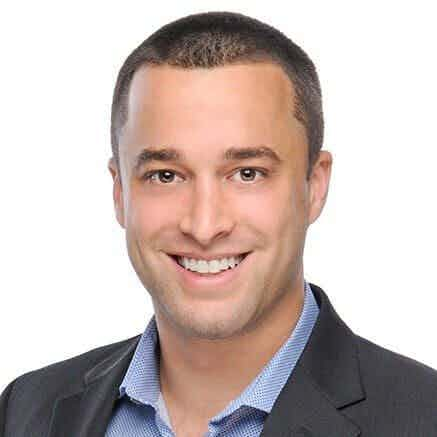3 Cases, More than $100 Million in Verdicts
Major 2016 cases saw expert witnesses play a key role in securing over $100 million in verdicts across medical malpractice, product liability, and environmental torts.
Updated on
As we head towards the later part of 2016, it’s an appropriate time to take a look back at some of the major cases this year and see how expert witnesses were deployed. In actions ranging from medical malpractice, to product liability, to environmental torts, expert witnesses contributed key technical insights in a number of cases, and occasionally helping to secure significant verdicts. Below, we’ve taken a look at three major cases where expert testimony has made a difference.
Christiansen v. Wright Med. Tech., Inc. (In re Wright Med. Tech., Inc., 127 F. Supp. 3d 1306 (N.D. Ga. 2015
Plaintiff Robyn Christiansen filed this action against Defendant Wright Medical based on the failure of the Wright Conserve Hip Implant System; a hip replacement device, that was surgically implanted on April 24, 2006, to replace Plaintiff’s right hip. On November 9, 2015, trial began on Plaintiff’s claims for: (1 Strict Product Liability Design Defect; (2 Negligence Design Defect; (3 Fraudulent Misrepresentation; (4 Fraudulent Concealment; and (5 Negligent Misrepresentation, and her demand for compensatory and punitive damages.
Defendant made Daubert challenges against many of the Plaintiff’s experts.
Denied Experts
Dr. Brent W. Morgan’s (medical toxicology expert expert opinion – that the failure of Plaintiff’s hip implant was caused by metallosis – and Dr. Susanne Parisian’s (FDA Regulatory expert expert opinion regarding Plaintiff’s metallosis condition were excluded. Dr. Jay M. Vincelli’s (biomedical engineering expert expert testimony regarding his calculation of the immeasurable wear on Plaintiff’s hip implant was also excluded.
Admitted Experts
Dr. Reed Ayers (metallurgy expert did not discuss Plaintiff’s hip implant specifically. However he discussed general issues with Wright Medical’s Conserve cup. Thus opining that Wright Medical’s implant could produce “localized discoloration,” evidencing metallosis, that could lead to the failure of an implant. This testimony was also admitted.
Result
In its verdict, the jury found that Wright Medical’s hip replacement device was defectively designed, was unreasonably dangerous, was defective when it was sold to Plaintiff, caused Plaintiff’s injuries, and that Plaintiff was entitled to recover compensatory damages on account of the defective device in the amount of $550,000. The jury also awarded $10 million in punitive damages, and concluded that Plaintiff was not at fault in causing her harm.
On December 28, 2015, Defendant filed its Renewed Motion for Judgment as a Matter of Law, or in the Alternative, Motion for New Trial and to Amend the Judgment. As it stands, the Defendants were initially successful in having the judge reduce the punitive damage award, but motions and appeals by the Plaintiff to restore the initial award are still ongoing.
Isaiah Ewing v. University of Chicago Medical Center, 13 L 13750 (2016
This case involves Lisa Ewing, 24, who gave birth to her son, Isaiah Ewing, at the University of Chicago Medical Center. On April 20, 2004, Ms. Ewing entered the labor room at the Medical Center. It was there that doctors first attempted to induce Ewing into labor. Six hours after this attempt to induce Ewing into labor, and 11 hours after entering the hospital, an attending physician decided that it would be best to deliver the baby through a ceasarian section after finding a non-reassuring fetal heart-rate following the failure to induce labor. Isaiah was born with birth asphyxia, hypoxic brain damage and now has severe cerebral palsy. Plaintiffs’ counsel claimed that the hospital’s negligent treatment was the sole and proximate cause of Isaiah’s birth defects.
Plaintiff’s Experts
The Ewings’ obstetrical nurse experts opined that the nursing staff at the sued hospital deviated from the standard of care in numerous ways. Therefore, their maternal fetal and obstetrical experts concluded that had Isaiah been delivered by cesarean section as was required by the standard of care, he would not have suffered from brain damage.
The Ewings’ expert in physical medicine and rehabilitation opined that while Isaiah suffered a severe brain injury resulting in permanent physical and cognitive deficits, that with proper treatment including 24/7/365 and extensive therapies, he would live a near normal life expectancy. Consequently, their vocational rehabilitation expert testified at trial that Isaiah’s loss of earning capacity was approximately $2 million to $3 million.
Defendant’s Experts
The hospital’s expert neonatologist testified that there was an in utero event that caused brain damage at least 24 hours prior to delivery. The defense’s expert in obstetrical nursing opined that the fetal monitor strips were stable throughout and that the nursing monitoring was within the standard of care. Therefore, there was no reason for the nurses to suggest an immediate caesarian section. The defense’s expert in physical medicine and rehabilitation testified that Isaiah had a very shortened life expectancy and moreover would not require 24/7 caregivers for the next 60 to 70 years. Also, the 24/7 care could be delivered in a more helpful and more reasonable way, for much less money than requested by the Ewings.
Result
The jury found for the Ewing’s and thus awarded $53 million.
Case: Clara Dunem, et al. v. Monsanto Co., (E.D. Mo. May. 25, 2016
Facts
Between 1935 and 1977, Monsanto Chemical Co. manufactured polychlorinated biphenyl (PCBs. This was used in products such as food packaging, industrial equipment, and paint. During this time, plaintiffs Bill Luce and Clara Dunem and decedent Rick Reinhold developed non-Hodgkin’s lymphoma. The plaintiffs alleged that exposure to PCB within the food chain caused their consequent illness.
At the time of the case, Luce and Dunem’s conditions were in remission. However, Reinhold died from to the condition on March 19, 2011. Dunem and Luce claimed damages for mental anguish and suffering, with counsel requesting damages of $2 million to $5 million each. In addition, Debbie Reinhold, decedent’s wife, sought $5 million to $10 million for a loss of consortium claim.
Experts
The plaintiffs’ expert epidemiologist testified that, based on medical literature and studies of the general population, worker studies, and individual cases, there is a link between PCBs and the development of non-Hodgkin’s lymphoma.
Another epidemiologist and the plaintiffs’ expert oncologist both confirmed that PCBs were the specific cause of the three plaintiffs’ illness.
The defense’s epidemiologist stated in testimony that there was no link between PCBs and lymphoma and also argued that the worst side-effect of PCB exposure is a skin rash. The defense’s expert oncologists also denied any link between PCBs and cancer. The defense called experts in the fields of plastics and mechanical engineering to testify as to the usefulness of PCBs in industrial applications.
Result
The jury found that Monsanto was grossly negligent and reckless. Consequently, the plaintiffs were awarded $17,525,000 in damages. They were also awarded $28,950,000 in punitive damages. The total award was $46,475,000.
About the author
Jared Firestone, J.D.
Jared Firestone, J.D., is a multi-disciplinary attorney with expertise in a range of legal areas. He founded and operated Firestone Law Firm PA in Hollywood, Florida, and worked as an Associate Attorney at Gustman Law P.C. in New York. His practice areas include Personal Injury, Criminal Defense, Medical Malpractice, Trusts & Wills, Civil and Commercial Litigation, Family Law, Real Estate, and Immigration. Additionally, he has experience in real estate, focusing on residential property in the Miami/Fort Lauderdale areas. Firestone also served as a pro bono Mediator at the Benjamin N. Cardozo School of Law Divorce Mediation Clinic. He holds a J.D. from Cardozo School of Law, where he honed skills in E-Discovery, Divorce Mediation, and Legal Writing, and a Bachelor’s degree in Philosophy from Tulane University.
Subscribe to our newsletter
Join our newsletter to stay up to date on legal news, insights and product updates from Expert Institute.
Sign up nowA Sample Voir Dire: How To Qualify An Expert Witness
Download free white paperChallenging Opposing Experts: Advanced Research Techniques
Download free white paperCross Examining Expert Witnesses: The Ultimate Guide
Download free white paper
Subscribe to our newsletter
Join our newsletter to stay up to date on legal news, insights and product updates from Expert Institute.



